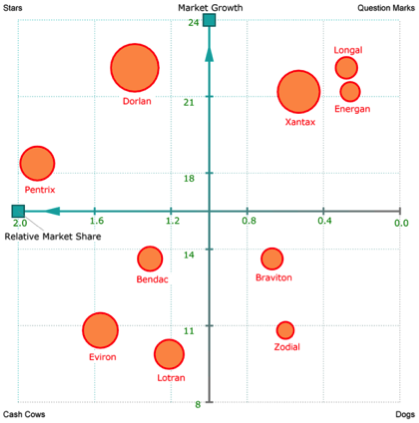The first step to creating a more effective organization is determining how to deploy your resources. There are no exceptions. Consider the following:
- A restaurant has 50 menu items with 5-10 items that drive their sales and profits and 5-10 that cost them money to sell
- A service company has ten product lines with 2-3 that drive their business and 2-3 that lose money
- A manufacturing company has 20 product lines with 5-7 that keep the entire enterprise going and 5-7 that are dragging them down
- A non-profit organization has 10 sources of revenue with 2-3 that keep the doors open and 2-3 that are costing valuable staff time for too little return
Whether you are part of a large or small organization, resources are limited. There is a certain amount of time and money and talent to cover the x number of initiatives you’ve decided to pursue. This is a fact so simple and undeniable that it’s hard to understand why it is so often overlooked. It’s also generally agreed by all – until we look at what lines we should either re-price or drop.
In the best cases I work with CEOs who have simply overlooked the downside of having too many products, services or revenue sources. In the worst cases I face the proverbial elephant in the room that no one wants to talk about.
- “We will lose customers if we eliminate that product.”
- “Our firm was established using that service so we can’t just let it go – it’s our heritage.”
- “We’ve tried dropping that product line and the board won’t let us.”
- “Yes we lose money on that area but it’s essential to our customers.”
- “We use that service for new business – it’s getting us into a new market our competitors are in.”
Over time, I’ve developed a method that’s acceptable to most in simply identifying the most and least effective products, services and sources. My goal is for the organization to apply the same dollars and time to fewer priorities (leverage) to become more effective.
To start the process, we use a dumbed-down version of the Boston Consulting Group Growth-Share Matrix. The model was created by BCG founder Bruce Henderson almost 50 years ago.
The matrix was created for large companies to look at their businesses in relation to their potential for continued investment. Each business line in a conglomerate was plotted on a graph whose axes were market growth and market share. The Wikipedia-sourced chart below gives a rough example.

The made-up product names, once plotted are found where they can then be defined as (bottom right quadrant) dogs, (top right) question marks, (bottom left) cash cows and (top left) stars. The dogs fall onto the graph as low market share/low growth, the question marks as low share/high growth market, the cash cows are high market share in low growth categories and stars are high in both key factors.
For me, the matrix is the beginning of every plan to strengthen an existing organization. And my “dumbing down” makes the axes simply (low to high) revenue and profit for each product, service or source. Here’s a rough outline of some matrices I’ve plotted with our partner organizations:
- A restaurant we loaned start-up capital to seven years ago has menu items that 20% of their customers order and items that less than 1% order
- My own database media organization marketed 23 products in 2015 and after doing the matrix we decided we can do same sales at much higher profit selling only 13 in 2016
- My manufacturing friend learned quickly via the matrix that 10 of his 20 product lines lost money but since he felt he couldn’t simply drop them, we repriced those items to assure profitability - the customers can still get these products but we make money. Seems fair.
- One of the first non-profit organizations I worked with found out that they were spending 50% of staff time on fund-raising events that brought in less than 15% of their revenue.
No organization runs at perfect efficiency. We will always have new products that cost us investment money to find out if we can compete, services that build our image or are necessary for our larger clients, and sources of funding that have benefits beyond income.
The key to effectively strengthening and building your organization is to realize where you are using your resources efficiently and effectively and where you are not, then build your strategy and plan around that knowledge.
Peace,
Tim McCarthy





